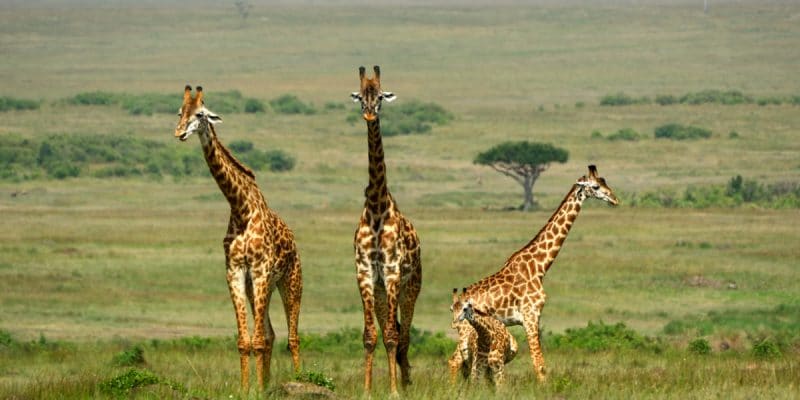Giraffe populations, relatively recent targets of poachers, have declined throughout the black continent, from 140,000 to less than 80,000 over the past 15 years. To prevent the extinction of the species, a group of 30 African states are seeking the support of the European Union for the establishment of urgent restrictions on international trade in giraffe bones and spotted skins.
The European Union (EU) has set itself until the end of March 2019 to respond to the request made by the group of 30 African countries, all located in the giraffe range, such as Kenya, Chad and Niger. They are calling for EU support to give giraffes special protection under the Convention on International Trade in Endangered Species of Wild Fauna and Flora (CITES), an international treaty that governs trade in endangered species. “Listing giraffes in Appendix II would result in “essential control” over international trade,” said Abba Sonko, who heads the CITES activities in Senegal, a member country of the coalition.
Although the CITES classification does not result in an absolute ban on trade in giraffe products, the restrictions are such that they would allow the authorities to control the traffic in the species, and to ensure that such traffic does not contribute to the decline of wild populations. EU support is therefore crucial because the region is partly responsible for poaching African giraffes.
Up to $15,000, just to kill a giraffe in Africa
Despite the decline of giraffe populations in Africa from 140,000 to less than 80,000 over the past 15 years, according to the Giraffe Conservation Foundation (GCF), hunting this very large savannah mammal remains legal in many African countries because it is profitable for tourism.
Sport hunters from Russia, the United States, but also from European countries such as Germany, pay thousands of dollars for safaris to South Africa, Namibia and Zimbabwe, where giraffe hunting is still allowed. Park fees, as well as those of the guide, can reach up to $15,000 per hunter.
According to GCF, such hunting has contributed to the disappearance of giraffes in Angola, Mali and Nigeria. Giraffe populations have been halved since 1988.
Boris Ngounou






